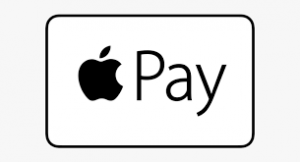Apple Pay is a mobile payment system developed by Apple Inc. It allows users to make payments using their iPhone or Apple Watch.
Apple Pay has been designed with security and convenience in mind. It is a contactless payment method that uses near-field communication (NFC) technology to communicate with the point of sale terminal. It does not require a signature or PIN.
Apple Pay is available for both iOS and macOS devices and in the web browser Safari on macOS or iOS devices. In addition, it can be used through Apple Watch and on the website applepay.com from any computer connected to the internet via Wi-Fi or cellular data connection.

What are the Benefits of Using Apple Pay?
Apple Pay is a mobile payment service that allows customers to use their iPhone, Apple Watch, or iPad to make purchases with their stored credit card information.
Apple Pay is a convenient and secure way of making payments. It can be used in thousands of stores and apps. Apple Pay also offers benefits for the customer, such as zero percent interest on purchases made using the service.
Apple Pay has been around for a few years, but it has become more popular recently since its compatibility with Android devices. Customers who don’t have an iPhone or Apple Watch can still use Apple Pay on their phone by downloading the app from the Google Play Store or App Store.
Does Apple Pay Take a Percentage
Yes, Apple Pay Takes a Percentage.You can only add money from a supported United States debit card or prepaid card in Apple Pay. And the limitations are as follows:
- Within 7 days, you can add up to $10,000.
How Much Does Apple Pay Take on Transactions?
Apple is one of the most expensive companies to work with, but it pays pretty well.
Apple Pay is a payment platform that enables users to make payments via their iPhone, Apple Watch, or Apple TV. It uses secure tokenization technology to give customers peace of mind and avoid credit card fraud.
Apple Pay transactions are processed through the company’s payment processor, which takes a small fee on each transaction. The company also takes a percentage of sales made through its online store and apps and an annual licensing fee from developers who want to use its App Store or iTunes services.
Apple is known for partnering with banks, and the company has a payment solution called Apple Pay that is available for consumers. Rumors are that Apple agreed to charge banks $3 each time a transaction is completed on their system, with individual deals struck between the company and banks such as Chase, Bank of America, Wells Fargo, etc.
Apple’s cut is reportedly at approximately 15 cents out of each purchase which equates to 0.15 percent of each $100 purchase.
Apple Pay expanded to websites when iOS 10 was released, meaning that it’s easier than ever for users to pay on a website. Apple Pay offers an alternative to PayPal and other payment services for online sellers. Many websites and payment providers now offer Apple Pay on the web. Popular ones include Switch, Stripe, and SquareSpace.
Apple Watch and iPhone purchases are verified through Touch ID on some Mac models. On Macs with a touch bar, purchases are manually verified through a connection to the device before being authorized. Touch ID (or Face ID on iPhone X) is the name of a security feature that allows you to authorize purchases by scanning your fingerprint or face.